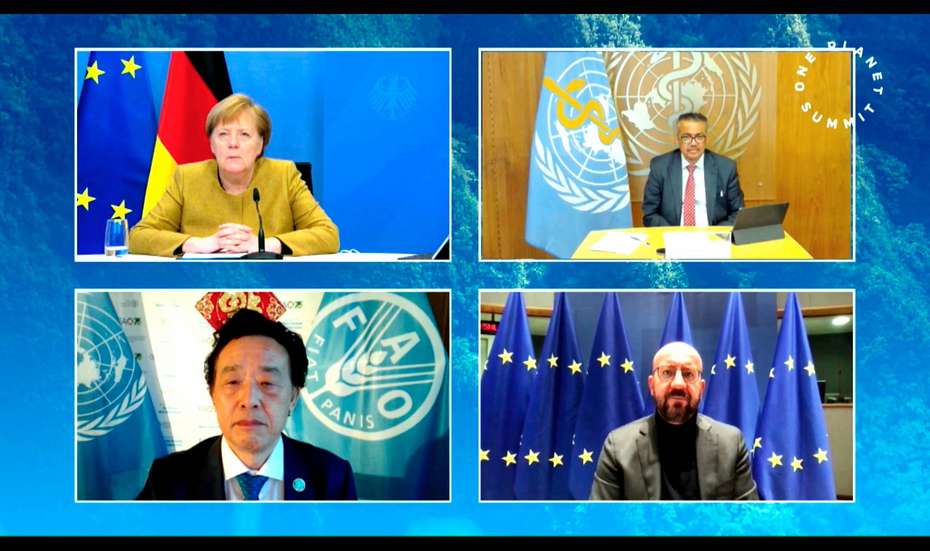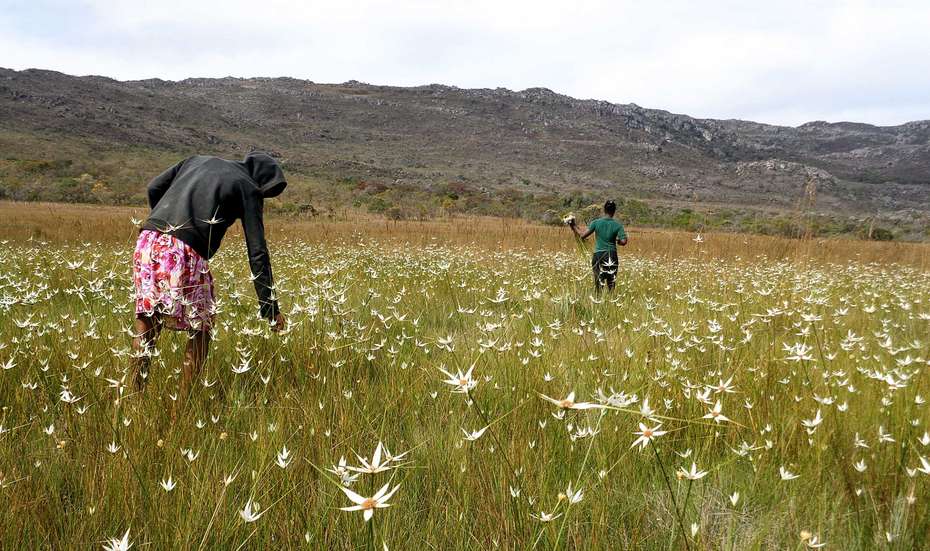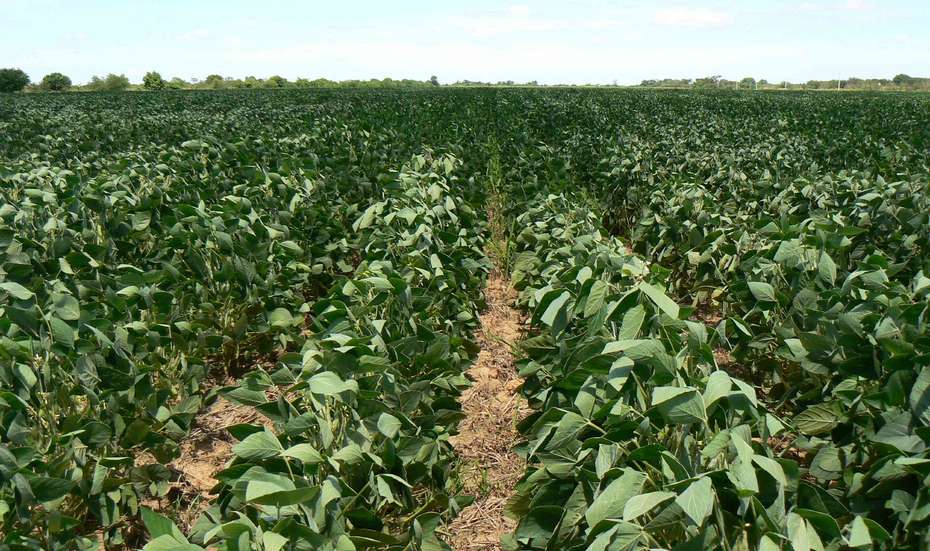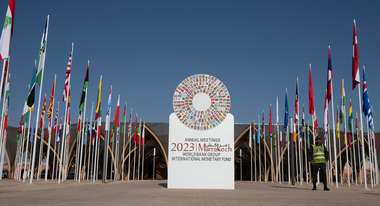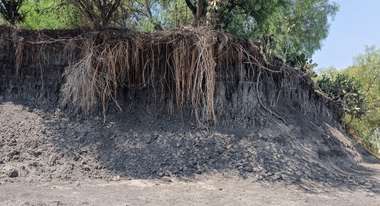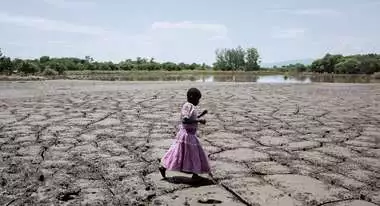Towards restoring biodiversity by 2050
The international community has missed its targets for biodiversity conservation. In autumn, the parties to the UN Biodiversity Conference will work to adopt a new ambitious framework. What must be included?

Governments around the world have failed so far to reach most of the biodiversity targets set by themselves. Around the turn of the millennium, the states signatory of the Convention of Biological Diversity established as a goal to “significantly reduce the rate of biodiversity loss” by 2010. Ten years later, not only had a significant reduction not been achieved, but instead the planet seemed to go in the wrong direction, with an acceleration of many of the drivers of biodiversity loss.
Alarmed, countries developed a new set of biodiversity targets for 2020, the so-called Aichi targets and the United Nations declared the 2010-2020 the decade of biodiversity. These targets comprehensively covered pressures, the state of biodiversity and benefits such as ecosystem services. Despite progress in some of the targets, the Global Biodiversity Outlook 5 of the Convention on Biological Diversity concluded last year that none of the 20 Aichi Targets had been met. Most countries did not set effective national targets in accordance with the Aichi objectives and investments. As a result, biodiversity loss continues unabated.
Unfortunately, the European Union has not been doing much better than the rest of the world, failing also to fully meet its targets two decades in a row. In Germany, recent studies have also suggested widespread declines in common plant species and declines in insects in agricultural landscapes.
Failure to address the biodiversity crisis
Why are countries failing to address the biodiversity crisis, allowing the decline of many plant and animal species, sometimes all the way to extinction? The problem is that the biodiversity crisis is driven by a complex set of indirect pressures, involving population growth, consumption growth, as well as direct pressures, such as agricultural intensification, deforestation, overharvesting, pollution and biological invasions.
In addition, the other environmental crisis of our times, climate change, is itself driving biodiversity loss. Governments have had serious difficulties in tackling both the climate change and the biodiversity change challenges, as they are linked to our socio-economic development patterns. Addressing them requires a mixture of technological and societal transformations, with biodiversity loss being arguably the most complex challenge of the two.
It is in this context that later this year countries will meet at the 15th Conference of the Parties of the Convention on Biological Diversity to approve a new ambitious Post-2020 Global Biodiversity Framework. The European Commission took already the lead with the approval of the EU Biodiversity Strategy for 2030. The main goal of these Post-2020 strategies is to put our planet on a trajectory to “living in harmony with nature” by 2050. The idea is to bend the curve of biodiversity loss towards a positive future for people and nature. This idea of moving from mitigating biodiversity loss to improving biodiversity underpins the declaration of 2020-2030 as the UN decade of ecological restoration.
Overall failure with some progress
The Post-2020 Global Biodiversity Strategy builds on the experience of the last couple of decades. Despite the overall failure of fully meeting past targets, there has been some significant successes in biodiversity policy and management. For instance, both in the EU and globally, the system of protected areas has expanded over the last few decades and covers over 17% of the land surface and 10% of the ocean.
In Europe, many of the species listed under the habitats and birds have seen slight improvements on their conservation status. Globally vertebrate extinction rates would be four times higher without the conservation efforts of the last few decades. The improvements in Europe can be partially attributed to the Natura 2000 protected area network and agri-environmental subsidies targeting the protection of biodiversity in European landscapes, although the Common Agricultural Policy continues to fall short of its goals with only 8.5% of the funds dedicated to biodiversity and landscapes.
In addition, rewilding has emerged as one possible restoration trajectory both for abandoned farmland and for a new approach to the management of forests and wetlands, with several species of the European megafauna making a remarkable comeback from the brink of extinction. Public awareness about the importance of biodiversity and the existence of a biodiversity crisis has also significantly increased, with citizen scientist around the world becoming the major contributors of biodiversity observations to the Global Biodiversity Information Facility trough sites such as iNaturalist and eBird (or the similar Ornitho in Germany).
Negotiating new ambitious global goals
The draft of the Post-2020 Global Biodiversity Strategy, currently under negotiation by governments, proposes a set of four goals for 2050 with associated milestones for 2030 and a set of 20 action targets. The goals are:
- to improve the condition of ecosystems, while supporting healthy populations of all species and reducing the proportion of threatened species;
- improve the capacity of nature to deliver benefits to people, the so-called ecosystem services;
- ensuring the fair and equitable use of genetic resources;
- commit sufficient resources to the implementation of the strategy.
The quantitative milestones for each of these goals for 2030 is still under discussion. Particularly relevant for landscape managers are the action targets related to the increase of protected areas eventually to 30% of the land surface, and an even larger portion of the planet under effective spatial planning with degraded areas identified for restoration. Ambitious targets for reducing excessive fertilizer use, biocides and plastic waste are being discussed.
Clear roadmaps and legally binding commitments
If we want to combat the loss of biodiversity, governments should in future present a clear roadmap on how they will achieve and monitor targets set by the Convention on Biodiversity in their own countries, working with stakeholders across multiple sectors to mainstream such targets and ensure ownership.
Governments should also ensure, that the CBD targets become legally binding, similar to the Paris Climate Agreement or the Washington Convention on International Trade in Endangered Species of Wild Fauna and Flora (CITES). Financial resources to promote biodiversity need to be significantly increased and new instruments such as payments for ecosystem services and biodiversity-related taxes should be introduced. Further, the CBD should establish a mechanism to verify progress and the compliance of member states with their targets.
Countries also need to address another major contradiction: According to the Organisation for Economic Co-operation and Development (OECD), international public expenditure on biodiversity is $3.9 to 9.3 billion a year – while governments spend at the same time approximately $500 billion per year supporting activities potentially harmful to biodiversity.
The new EU biodiversity strategy
The EU Biodiversity Strategy for 2030 already sets some quantitative targets. For instance, besides the 30% land and sea protection target, and ambitious 10% of EU land and sea should become strictly protected. I am personally particularly fond of the strict protection target, as most of the EU landscapes are already under effective spatial planning tools, but space for natural ecosystem processes and wild nature is extremely scarce. For instance, in Germany only 0.6% of the areas have strict protection, with the current national goal being 2%.
The EU Biodiversity strategy aims to reduce by 50% the overall use of chemical pesticides by 2030, a 20% reduction of fertilizer use, to have at least 10% of agricultural area under high-diversity landscape features and to have 25% of the EU’s agricultural land organically farmed.
In addition, the insect decline is being addressed by the EU Pollinators Initiative, while soil restoration will take central stage under a revision of the Thematic Strategy for Soil Protection. Approaches to address simultaneously climate change and biodiversity change through afforestation are also being explored, the most promised being the ones based on rewilding principles emphasizing natural ecological succession in abandoned agricultural lands. An EU Nature restoration plan, addressing also the restoration of free-flowing rivers is currently being prepared and will be legally binding.
The link between farmers and consumers
Farmers will be key actors in ensuring the success of restoring plant animal populations and ecosystem integrity. With their local knowledge and experience, they can identify the actions needed on the ground to stop the decline of biodiversity and restore ecosystems. To a large extent farmers should participate directly to identify the actions in each landscape that are necessary to improve the conservation status of endangered plants and animals and restore high-diversity landscape features to promote ecosystem processes such as species dispersal.
Accountability is key because the individuals that take action to restore biodiversity need to be rewarded, while those that continue to harm biodiversity need to be punished. A tripling of the agri-environmental funds under the common agricultural policy could perhaps make a positive difference, in addition with certification schemes ensuring that consumers can also have a choice on how biodiversity friendly are the agricultural products they consume.
Don't blame the poor
The link between farmers and consumers highlights a broader challenge of implementation by countries: the remote indirect impacts on biodiversity. While much of the immediate impact on biodiversity occurs in lower-income countries, we should be careful not to blame the poor in the destruction of biodiversity. A consumer in Germany can have impacts on biodiversity not only in Germany but also abroad. In reality, 90% of the impacts on biodiversity driven by the German economy happen elsewhere, often in biodiversity rich regions such as Brazil or South East Asia.
Some of those impacts are driven through imports of agricultural products, such as soy for animal feed. Full accountability can only be achieved when these indirect impacts are included in the certification schemes and rewards are offered by agri-environmental schemes. These tools, however, are still completely insufficient and need to be improved.
Assessing biodiversity trends in real time
Finally, we need to significantly improve the monitoring of biodiversity change. Our knowledge of how biodiversity is changing continues to be hampered by gaps in spatial, temporal and taxonomic coverage. Recently, Germany has set up a national biodiversity monitoring centre, under the auspices of the Federal Agency for Nature Conservation (Bundesamt für Naturschutz). Most European countries have yet to set such national biodiversity monitoring centers, although an effort is under way to design a European wide biodiversity monitoring system (EuropaBON).
With up-to-date information that is spatially explicit, we will be able to assess biodiversity trends in real time, identifying the policies and the actors that are being successful across Germany and Europe, and those that are failing. This will allow us to work with a broad range of stakeholders to review actions and accountability mechanisms. Together, mainstreaming, accountability and monitoring can place us on a pathway to living in harmony with nature.






